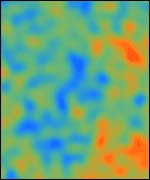The South Pole is about to get its own telescope. The telescope will be built in the area of the American research station and will enjoy the advantage of the bright, dry and dark Antarctic skies for many months.

The South Pole is about to get its own telescope. The telescope will be built in the area of the American research station and will enjoy the advantage of the bright, dry and dark Antarctic skies for many months.
"Using the new telescope we will be able to map large parts of the sky a thousand times faster compared to the existing means" says Prof. George Epstatio.
The astronomers believe that the telescope, which will be built at a cost of 16.6 million dollars, will be able to help understand the mysteries of the universe. The automated telescope will scan the sky for evidence of the dark energy driving the accelerated expansion of the universe.
"We are going to look for the signature of the war between gravity and dark energy," says Prof. John Carlstorm from the University of Chicago, who heads the project.
No one knows what that dark energy is, but it is believed to be related to the fact that the universe is expanding faster and faster. The early universe was extremely dense. The matter was concentrated in a small place and the force of gravity was then extremely strong. However, as the universe grew smaller, the matter moved away and spread out, and the density decreased. At a certain point, the mysterious force of dark energy enters. It beat normal gravity, and quickly began to accelerate the expansion of the universe.
Dark matter is invisible, but the telescope at the South Pole may see its effect on galaxy clusters that are forming and developing in the last billions of years.
It will be able to do this thanks to the largest array ever built of heat detectors, known as bolometers, which can measure temperature differences in the sky with differences of ten millionths of a degree.
Using this feature, the telescope will be able to map the sky more than a thousand times faster than the telescopes that exist today, Karlsturm said.
"Dark energy" is the current version of what Einstein called the cosmic constant. The US team says it will be able to confirm or deny this by the end of the South Pole Telescope's first year of operation. "It's a realistic goal," says Prof. George Epstatio from the Astronomical Institute of the University of Cambridge in the UK. "This is a very good way to explore the distant universe," he says.
